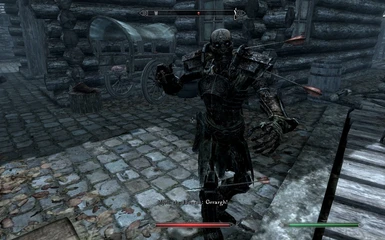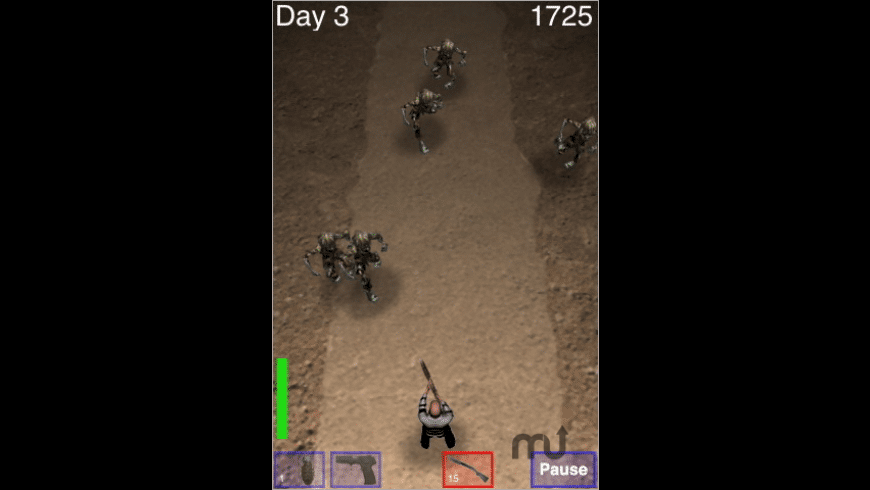- Zombie Invasion (steevenq) Mac Os Update
- Zombie Invasion (steevenq) Mac Os Download
- Zombie Invasion (steevenq) Mac Os Catalina
- Zombie Invasion (steevenq) Mac Os X
A mob of fun-loving zombies is about to invade your home, and your only defense is an arsenal of 49 zombie-zapping plants. Use peashooters, wall-nuts, cherry bombs and more to mulchify 26 types of zombies before they can reach your front door. Each zombie has its own special skills, so you'll need to think fast and plant faster to combat them all. Zombie Invasion is infinite zombie survival game with a lot of weapons and house upgrades! Newly has been added teammate, that will help you with defending your house. Pick the weapon that fits you and keep the zombies away! Originally available only as an exclusive for KISS: ZOMBIES #1, you can now own this rare, limited grayscale variant from horror art superstar Arthur Suydam! Decades after a zombie invasion has made humans an endangered species, the city of New Detroit is under siege. The people in charge have banned music, as the undead are attracted to sound, and have tried to rid the world of evidence that. Board up your windows — the zombie apocalypse is here! Bring the horde home with Zombie Invasion! Digital Decoration Collection, featuring legions of ravenous undead. Whether you project silhouettes or grisly, full-color scenes, this decoration is sure to create the ultimate Halloween experience for any horror fan.
Zombie Invasion (steevenq) Mac Os Update
In computing, a zombie is a computer connected to the Internet that has been compromised by a hacker, computer virus, computer worm, or trojan horse program and can be used to perform malicious tasks of one sort or another under remote direction. Botnets of zombie computers are often used to spread e-mail spam and launch denial-of-service attacks (DoS attacks). Most owners of 'zombie' computers are unaware that their system is being used in this way. Because the owner tends to be unaware, these computers are metaphorically compared to fictional zombies. A coordinated DDoS attack by multiple botnet machines also resembles a 'zombie horde attack', as depicted in fictional zombie films.
Advertising[edit]
Zombie computers have been used extensively to send e-mail spam; as of 2005, an estimated 50–80% of all spam worldwide was sent by zombie computers.[1] This allows spammers to avoid detection and presumably reduces their bandwidth costs, since the owners of zombies pay for their own bandwidth. This spam also greatly increases the spread of Trojan horses, as Trojans are not self-replicating. They rely on the movement of e-mails or spam to grow, whereas worms can spread by other means.[2] Lies and seductions mac os. For similar reasons, zombies are also used to commit click fraud against sites displaying pay-per-click advertising. Others can host phishing or money mule recruiting websites.
Zombie Invasion (steevenq) Mac Os Download


Distributed denial-of-service attacks[edit]
Zombies can be used to conduct distributed denial-of-service (DDoS) attacks, a term which refers to the orchestrated flooding of target websites by large numbers of computers at once. The large number of Internet users making simultaneous requests of a website's server is intended to result in crashing and the prevention of legitimate users from accessing the site.[3] A variant of this type of flooding is known as distributed degradation-of-service. Committed by 'pulsing' zombies, distributed degradation-of-service is the moderated and periodical flooding of websites intended to slow down rather than crash a victim site. The effectiveness of this tactic springs from the fact that intense flooding can be quickly detected and remedied, but pulsing zombie attacks and the resulting slow-down in website access can go unnoticed for months and even years.[4] Impossible fighter frog mac os.
The computing facilitated by Internet of Things (IoT) has been productive for modern day usage but it has played a significant role in the increase in such web attacks. The potential of IoT enables every device to communicate efficiently but this increases the need of policy enforcement regarding the security threats. Through these devices, the most prominent attacking behaviors is the DDoS. Research has been conducted to study the impact of such attacks on IoT networks and their compensating provisions for defense.[5]
Notable incidents of distributed denial- and degradation-of-service attacks in the past include the attack upon the SPEWS service in 2003, and the one against Blue Frog service in 2006. In 2000, several prominent Web sites (Yahoo, eBay, etc.) were clogged to a standstill by a distributed denial of service attack mounted by ‘MafiaBoy', a Canadian teenager.
Smartphones[edit]
Zombie Invasion (steevenq) Mac Os Catalina
Beginning in July 2009, similar botnet capabilities have also emerged for the growing smartphone market. Examples include the July 2009 in the 'wild' release of the Sexy Space text message worm, the world's first botnet capable SMS worm, which targeted the Symbian operating system in Nokia smartphones. Later that month, researcher Charlie Miller revealed a proof of concept text message worm for the iPhone at Black Hat Briefings. Also in July, United Arab Emirates consumers were targeted by the Etisalat BlackBerry spyware program. In the 2010s, the security community is divided as to the real world potential of mobile botnets. But in an August 2009 interview with The New York Times, cyber security consultant Michael Gregg summarized the issue this way: 'We are about at the point with [smart]phones that we were with desktops in the '80s.'[6] I dont know what to call it mac os.
See also[edit]
References[edit]
- ^Tom Spring (June 20, 2005). 'Spam Slayer: Slaying Spam-Spewing Zombie PCs'. PC World. Archived from the original on July 16, 2017. Retrieved December 19, 2015.
- ^White, Jay D. (2007). Managing Information in the Public Sector. M.E. Sharpe. p. 221. ISBN978-0-7656-1748-4.
- ^Weisman, Steve (2008). The Truth about Avoiding Scams. FT Press. p. 201. ISBN978-0-13-233385-6.
- ^Schwabach, Aaron (2006). Internet and the Law. ABC-CLIO. p. 325. ISBN1-85109-731-7.
- ^Lohachab, Ankur; Karambir, Bidhan (September 1, 2018). 'Critical Analysis of DDoS—An Emerging Security Threat over IoT Networks'. Journal of Communications and Information Networks. 3 (3): 57–78. doi:10.1007/s41650-018-0022-5. ISSN2509-3312. S2CID52924506.
- ^Furchgott, Roy (August 14, 2009). 'Phone Hacking Threat Is Low, but it Exists'. Gadgetwise Blog. New York Times. Archived from the original on July 16, 2017. Retrieved July 16, 2017.

